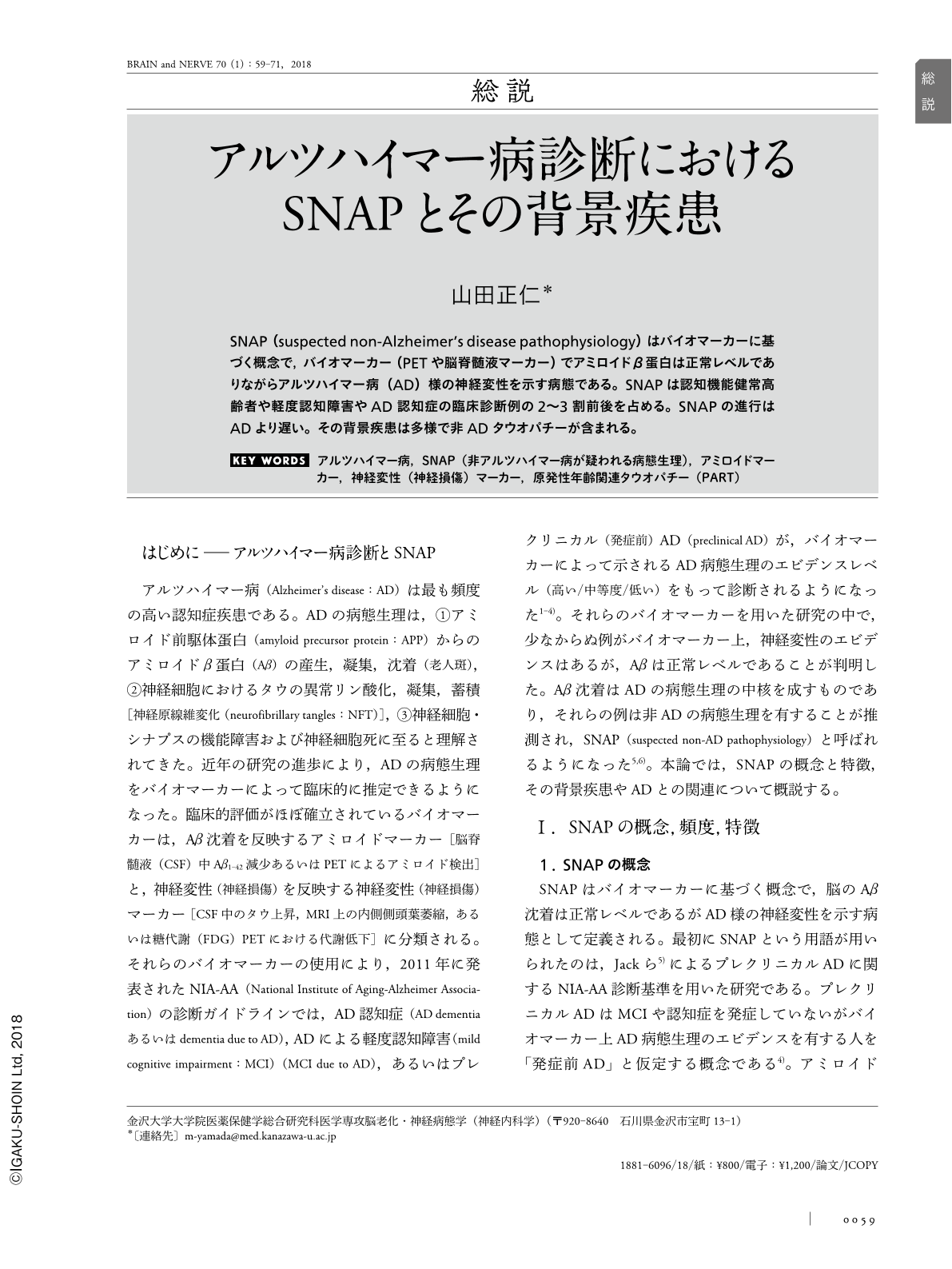Japanese
English
- 有料閲覧
- Abstract 文献概要
- 1ページ目 Look Inside
- 参考文献 Reference
SNAP(suspected non-Alzheimer's disease pathophysiology)はバイオマーカーに基づく概念で,バイオマーカー(PETや脳脊髄液マーカー)でアミロイドβ蛋白は正常レベルでありながらアルツハイマー病(AD)様の神経変性を示す病態である。SNAPは認知機能健常高齢者や軽度認知障害やAD認知症の臨床診断例の2〜3割前後を占める。SNAPの進行はADより遅い。その背景疾患は多様で非ADタウオパチーが含まれる。
Abstract
Suspected non-Alzheimer's disease pathophysiology (SNAP) is a biomarker-based condition that is found in individuals with normal levels of amyloid-β protein (Aβ) markers (A−) and abnormal levels of markers of neurodegeneration or neuronal injury (N+). SNAP is found in 20-26% of cognitively normal (CN) individuals aged 65 years or older and 17-35% of individuals with mild cognitive impairment (MCI). Similarly, 7-39% of patients with clinically probable Alzheimer's disease (AD) dementia are negative for Aβ. The ε4 allele of the apolipoprotein E gene is underrepresented in individuals with SNAP compared with amyloid-positive (A+) groups. The progression of the cognitive impairments of individuals with SNAP was slower than that of A+N+ subjects who had a high likelihood of AD pathophysiology and faster than that of A−N− subjects. The pathological backgrounds of the individuals with SNAP were heterogeneous and included cerebrovascular disorders, mixed pathologies, and non-AD neurodegeneration, such as primary age-related tauopathy [PART, also known as senile dementia of the neurofibrillary tangle type (SD-NFT) (tangle-only dementia) at the dementia stage] and argyrophilic grain disease. Further clarification of SNAP is needed to better define the mechanisms underlying the progression of AD pathologies in older individuals.

Copyright © 2018, Igaku-Shoin Ltd. All rights reserved.


